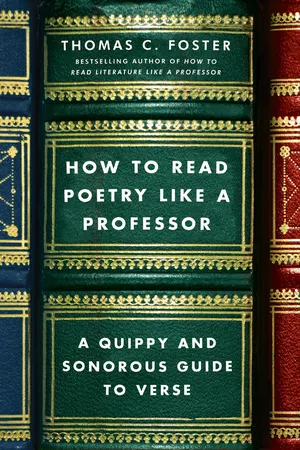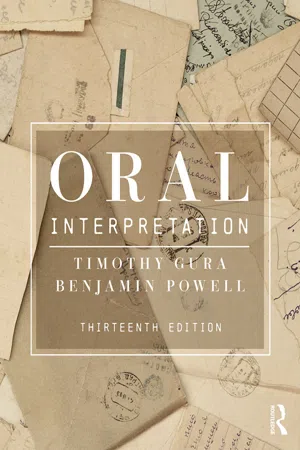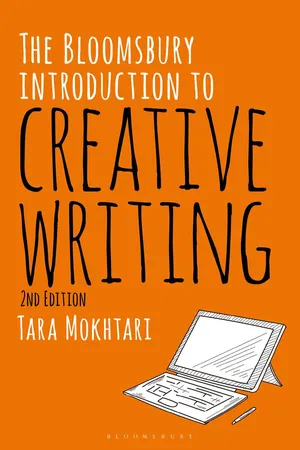Literature
Strophe
A strophe is a structural division in a poem or song, typically consisting of a series of lines with a specific meter and rhyme scheme. It is often used to mark a shift in tone, theme, or narrative within the work. In ancient Greek poetry, a strophe was also a part of a choral ode, performed by a chorus in conjunction with the antistrophe and epode.
Written by Perlego with AI-assistance
3 Key excerpts on "Strophe"
- eBook - ePub
How to Read Poetry Like a Professor
A Quippy and Sonorous Guide to Verse
- Thomas C. Foster(Author)
- 2018(Publication Date)
- Harper Perennial(Publisher)
There are three features of note. First, the rhyme scheme is ABABBCBCC, so things interlock—somewhat. Second, the stanza is written in our very good friend iambic pentameter—except, third, the ninth line, which is iambic hexameter (six feet rather than five), called an alexandrine. It has been used by a number of other poets, including most of the British Romantics, but it is sufficiently uncommon that I never suspect its existence when I see more than four or five lines grouped together. It sneaks up on me. Ten-line stanza (and beyond)—they can occur, but they are sufficiently rare that no one has bothered to come up with a name, or have but it hasn’t caught on. Beyond here there be monsters. Each sort of regular stanza has a set of practices, precepts, or outright rules that govern its practice. Once someone—a Spenser, say—introduces a novel form, his version becomes the standard. The quatrain has escaped this fate largely because it is so ubiquitous that no one progenitor can lay claim to it; the poetic canon is therefore pretty well split among the various available rhyme configurations. Which is just another way of saying, it’s all been done before. But what about divisions that are irregular? We call those Strophes or verse paragraphs, depending on who is doing the calling. Strophe comes from odes, which in turn come from Greek drama’s choral odes. Typically, the chorus engaged in a back-and-forth both literally and figuratively. As it debated a point, it moved in one direction and chanted the Strophe. Then, having reached its end point, it moved in the opposite direction and gave out the antiStrophe. Sometimes this to-ing and fro-ing would repeat; other times a resolution of sorts would be reached, and that was known as an epode. So: Strophe, antiStrophe, epode. For some reason, students resist “Strophe” in favor of “stanza,” which is too bad. “Strophe” gets you off the hook for any expectations that the second one will precisely resemble the first - eBook - ePub
- Timothy Gura, Benjamin Powell(Authors)
- 2018(Publication Date)
- Routledge(Publisher)
As you prepare your performance of poetry, keep these concepts in mind, too:- Prosody helps us understand how poems are made.
- Conventional poems, blank verse, and free verse offer many opportunities for important variations.
- The stanza is the poem’s “paragraph of sense” and “paragraph of sound.”
- The line serves as construction material of a poem.
- Patterns abound in poetry: in stresses, in syllables, in sounds, in length of line, in rhyme.
- The flow of sound and pause is measured in cadences: complete sentences are primary cadences; speech phrases are secondary cadences, as are individual lines.
█ Selections for Analysis and Oral Interpretation
Dylan Thomas uniquely mastered the condensation of poetic language; here he achieves turbulent poignancy in his plea. For all its emotional intensity, the poem follows a very logical argument, so make sure we see how the form and the language serve both the sound and the sense - eBook - ePub
- Tara Mokhtari(Author)
- 2019(Publication Date)
- Bloomsbury Academic(Publisher)
1 which is how we usually think of visual arts. To a degree, in order to understand a poem you have to read it through from start to finish. However, the way the words are arranged into deliberate line of lengths unencumbered by the margins of the page and the lines that are separated into stanzas of particular lengths, as well as the particular use of syntax and grammar which draws our attention to certain parts of the poem automatically, are presentational features which make poetry different from other genres of creative writing.As we read along, the line and stanza breaks inform our interpretation of the poem more instantly and intuitively than the words and phrases themselves, whether we trust our immediate responses to the poem or not. A terrific example of this occurs between the first two stanzas of Stevie Smith’s poem “Black March,” part of which is discussed later in this chapter.Whether you have been writing poetry daily in a journal since puberty hit (oh dear) or whether the mere mention of the word “poetry” onsets symptoms of post-traumatic stress with flashbacks to Shakespeare classes in high school (also, oh dear), it’s important to eventually acknowledge that poetic techniques are essential to all of your literary endeavors in one way or another. To comprehend the functions and applications of different poetic techniques is the first step in seizing more creative control over all of your writings. If you can use poetic techniques intentionally to give rhythm and pace to your prose, to emphasize certain ideas and images, and to simultaneously incite intellectual and intuitive responses in your readers, then you have the potential to produce really great work. Subsequently, it is likely that your readers’ interpretations of your work will be closer to your intention for the work, which is always rewarding for any writer.
Index pages curate the most relevant extracts from our library of academic textbooks. They’ve been created using an in-house natural language model (NLM), each adding context and meaning to key research topics.
Explore more topic indexes
Explore more topic indexes
1 of 6
Explore more topic indexes
1 of 4


